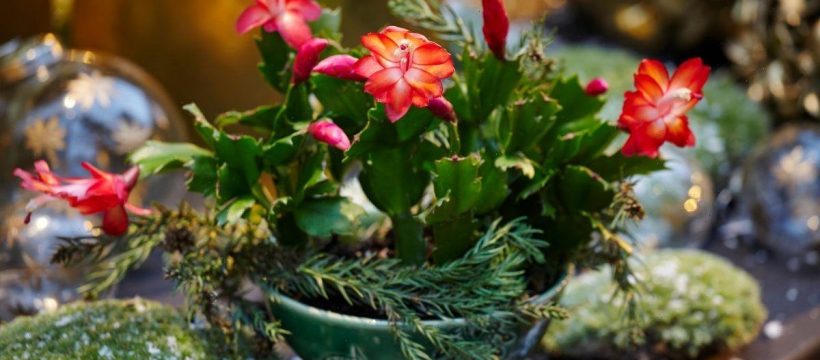Christmas Cactus: RHS advises on looking after plant
We use your sign-up to provide content in ways you’ve consented to and to improve our understanding of you. This may include adverts from us and 3rd parties based on our understanding. You can unsubscribe at any time. More info
Christmas cactus pruning is not just for the large varieties. Pruning a Christmas cactus, large or small, will help the houseplant to grow fuller and more bushier, which in turn results in more blooms in the future. So whether you are looking to simply reduce the size of your plant or are looking to make yours look even more beautiful, gardening experts have shared their top Christmas cacti pruning tips.
Experts at Garden lovers Club said: “Thanks to its long bloom season and profuse floral display during the winter months, Christmas cacti have long been considered a seasonal staple among houseplants.
“However, those who purchase this plant at the start of the holiday season when it’s beginning to bloom often find themselves at a loss as to how to care for it — and without the proper care, their Christmas Cactus plant may fail to bloom the next year.”
Although these houseplants do very well in indoor home environments, they have a few conditions that “must be met if they are going to perform their best”, according to the pros.
One of these conditions include being pruned. The experts noted that this is an “essential requirement” that if not done correctly can “inhibit or even prevent flowers from forming the following year”.

As these festive houseplants have leaf segments attached to one another that produce flowers on the tips, rather than a standard stem and leaf system, pruning them can be confusing for those who have never had them before.
Experts at Gardening Know How noted that the “best time” to prune Christmas cacti is right after it has bloomed. They explained: “At this time, the Christmas cactus will be entering a growth period and will start to put out new leaves.
“Pruning a Christmas cactus right after it blooms will force it to branch out, which means the plant will grow more of its distinctive stems.
“If you are not able to do your Christmas cactus pruning right after it blooms, you can prune the plant any time from after it blooms until late spring without doing harm to the Christmas cactus plant.”
DON’T MISS
‘Ideal’ temperature to heat homes – ‘keeps energy bills to a minimum’ [INSIGHT]
‘Most effective’ method to keep your home warm without central heating [EXPERT]
‘Biggest’ garden mistakes to avoid ‘devaluing’ houses – ‘damages’ home [COMMENT]
When pruning these houseplants and any other plant, gardeners should use a sharp, sterile pruning knife or clippers for the task.
The pros at Garden Lovers Club said: “The pruning knife you use should be very sharp in order to prevent tearing the delicate plant tissues.”
They also suggested that the pruning tools are to be sterilised in a commercial solution designed for use on gardening tools or a homemade mixture of one part bleach to nine parts water.
The experts also advised: “You should also wash your hands thoroughly before pruning — these precautions help prevent the spread of plant disease.”

When giving their houseplant a trim, it’s important to “always” prune them at the gap between segments.
The pros assured that this should be easy because these are the weakest part of the plant. Some people prefer to twist at the segment to remove foliage instead of using a knife, but this approach seems to work best on newer growth.
One thing that must never be done when pruning is to not prune “more than one third” of the foliage.
For those who have recently purchased this plant and it’s still small, they only need to remove about an inch. The experts said: “The end result should be that each stem is roughly the same length.”

Pruning also provides an “excellent opportunity” for plant owners to thoroughly inspect their Christmas cactus for any pests or pathogens that may be present. If they do spot any they can treat the plant to “avoid any further damage”.
Once these houseplants have been trimmed, the pros warned that it’s “never” a good idea to leave the leftover material sitting in the pot.
When the material decomposes, they’ll become attractive to a variety of pests and pathogens. Alternatively the experts advise simply tossing them into the rubbish or the compost bin.
Gardeners can also consider using the cuttings to propagate more of these houseplants. To do this, let the cuttings sit in a cool, dry place for a few days before placing them in a container with potting soil, then water sparingly until the new plants develop root systems.
Source: Read Full Article
